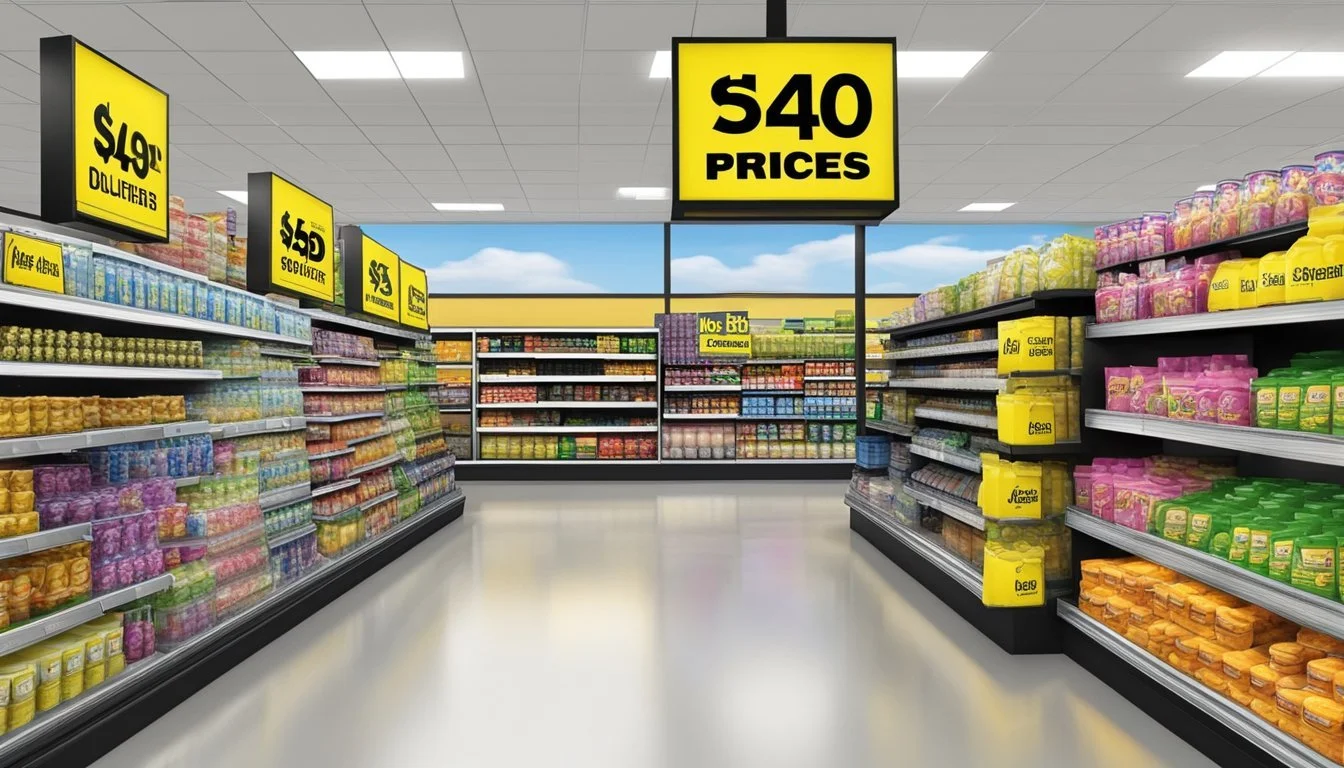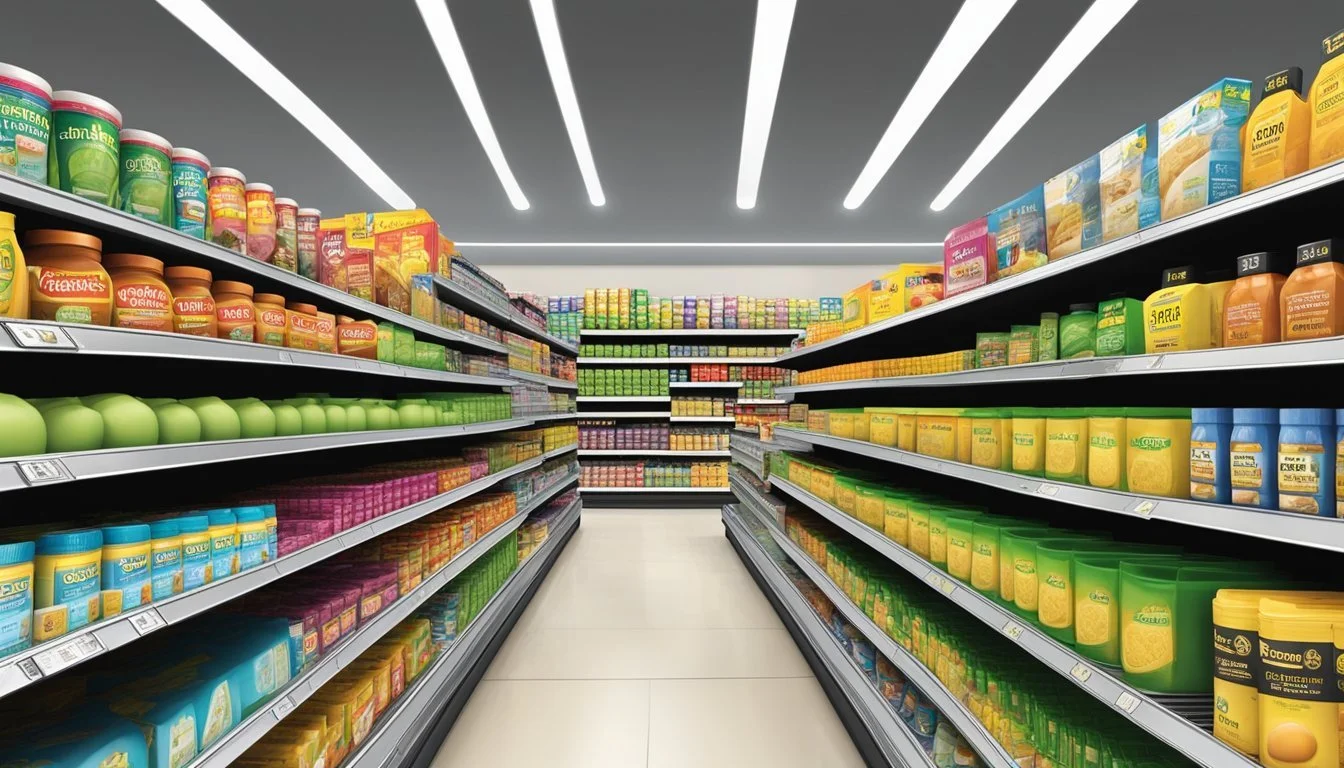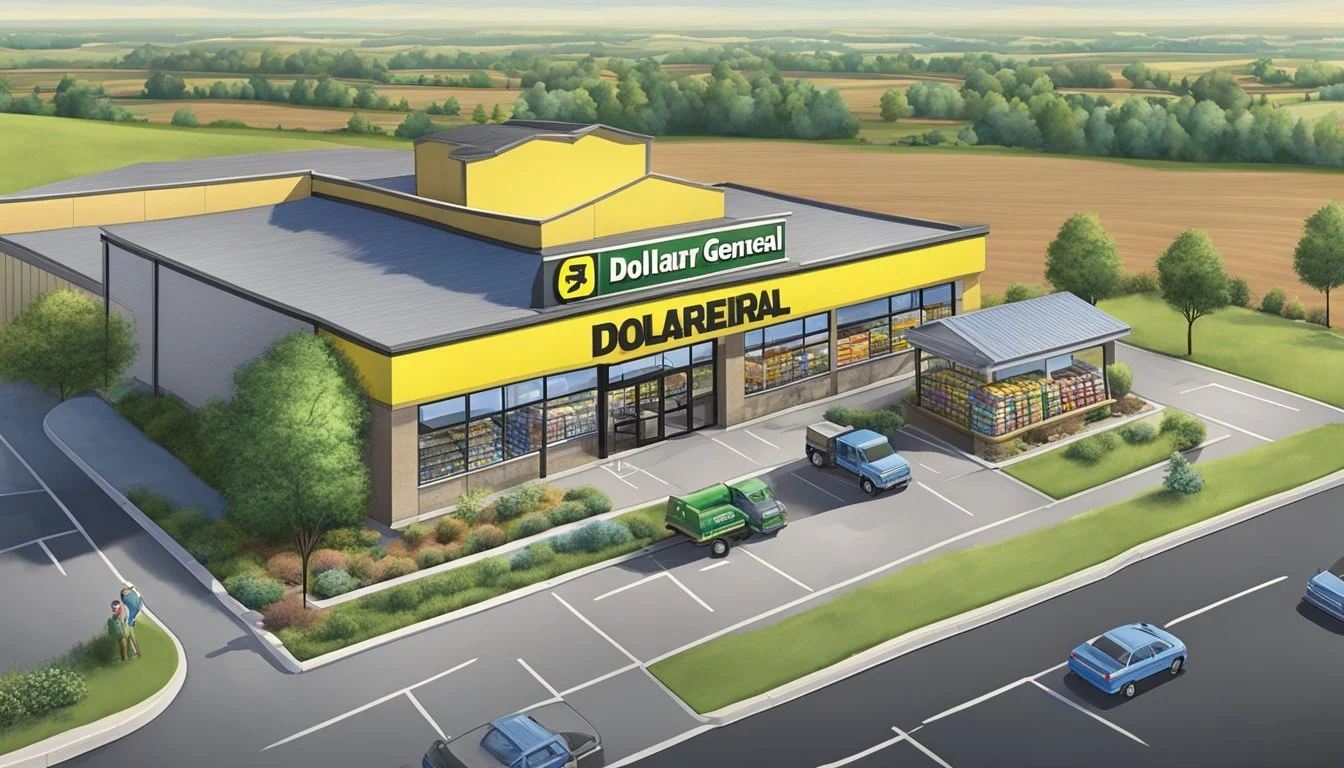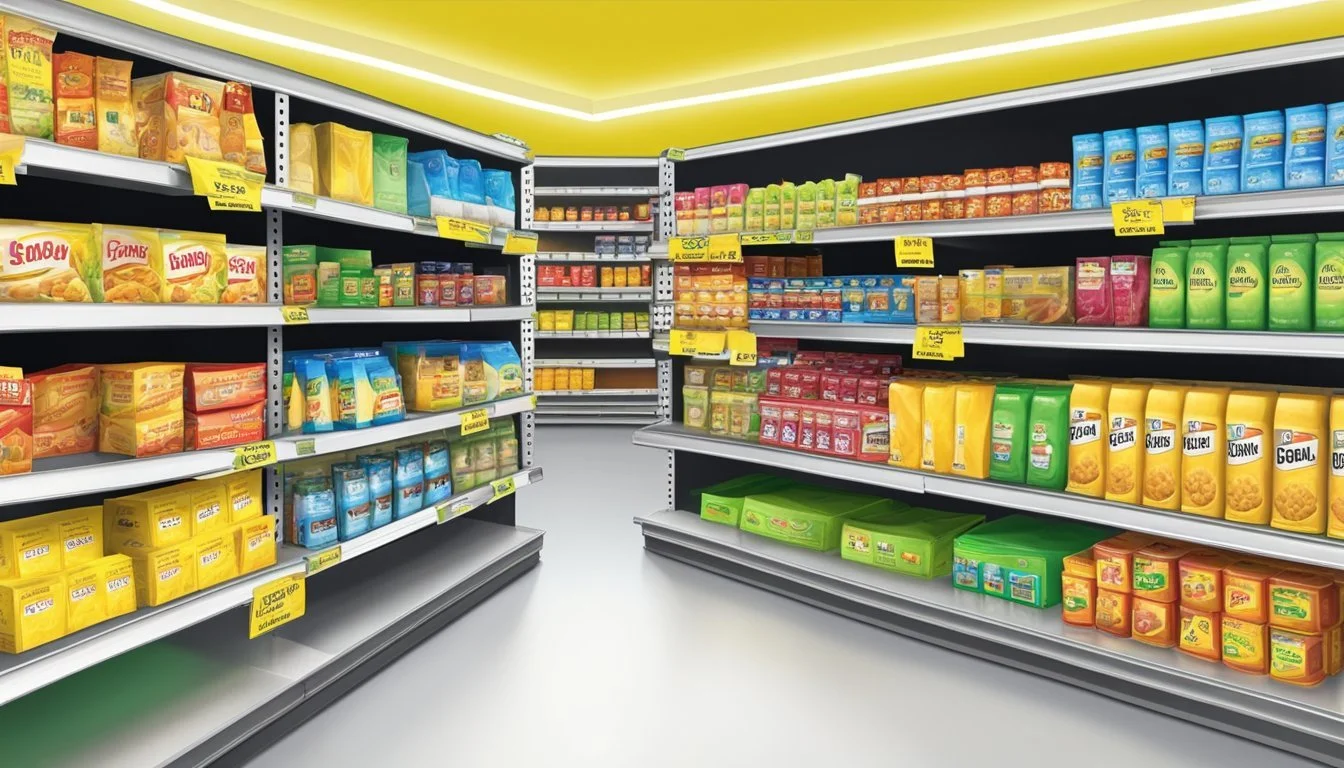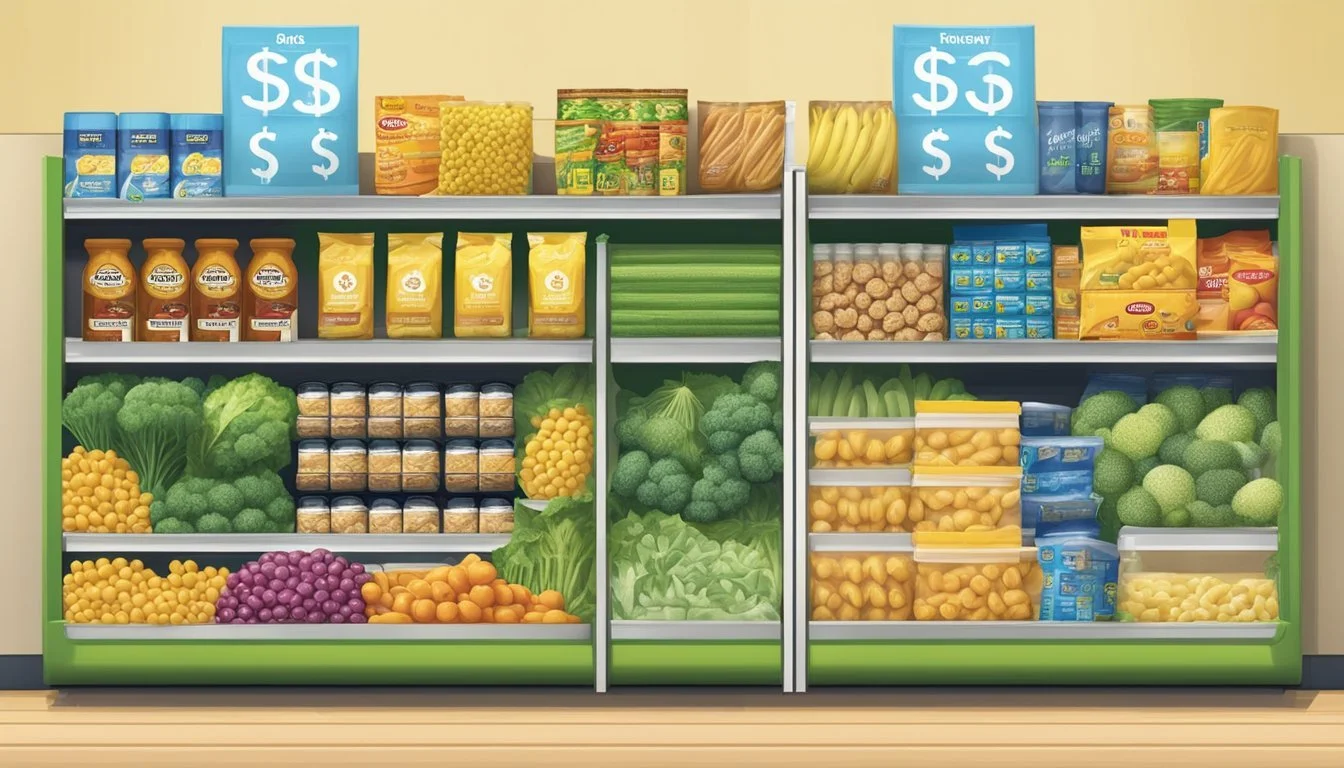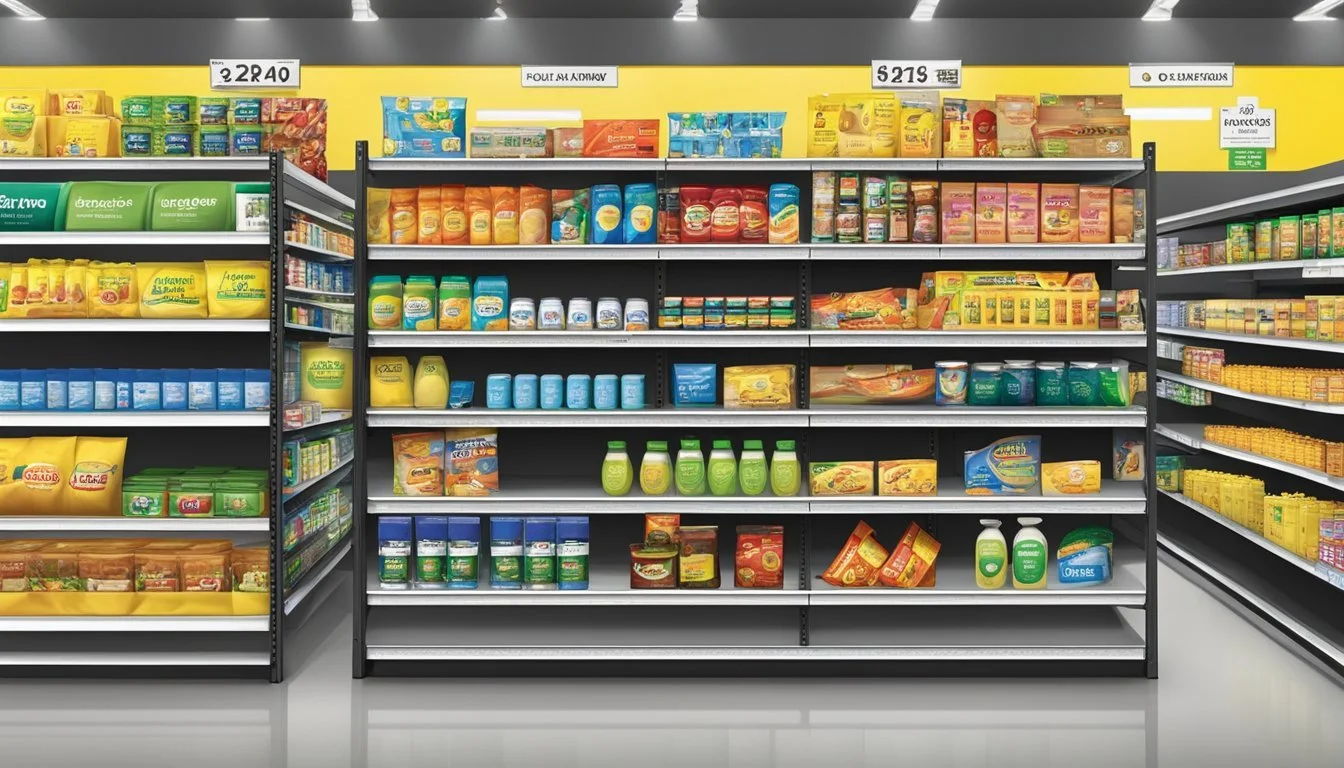Is Dollar General Cheaper Than Safeway?
A price comparison of budget-friendly grocers
Dollar General and Safeway are two popular retail chains in the United States, each catering to different segments of shoppers. While Dollar General focuses on offering everyday items at discounted prices, Safeway is a full-service supermarket with a wider range of products.
Dollar General tends to be cheaper than Safeway for many basic household items and packaged goods. This price difference is particularly noticeable for cleaning supplies, personal care products, and shelf-stable foods. Dollar General's business model revolves around keeping costs low and passing those savings on to customers.
Safeway, however, may offer better deals on fresh produce, meats, and specialty items. The supermarket chain also provides a broader selection of brands and products, which can be advantageous for shoppers seeking specific items or higher-end options. Comparing prices between these two stores can help consumers make informed decisions about where to shop for the best value on their particular needs.
Retail Landscape Overview
Dollar General and Safeway occupy distinct positions in the retail market, catering to different consumer segments. Their contrasting business models reflect the diverse landscape of American grocery and discount retail.
Market Position of Dollar General and Safeway
Dollar General operates as a discount retailer with over 17,000 stores across 46 states. It focuses on providing low-cost essentials in smaller, easily navigable spaces averaging 7,400 square feet. This compact format allows for quick expansion and lower operational costs.
Safeway, in contrast, is a traditional supermarket chain. It offers a wider range of products, including fresh produce, meats, and bakery items. Safeway stores are typically larger, providing a more comprehensive shopping experience.
Dollar General targets budget-conscious consumers in rural and urban areas. Safeway aims for middle-income shoppers seeking quality and variety.
Understanding Discount Stores and Supermarkets
Discount stores like Dollar General prioritize low prices and convenience. They stock a limited selection of everyday items, often in smaller package sizes. These stores excel at providing basic necessities at competitive prices.
Supermarkets such as Safeway offer a broader product range. They emphasize fresh foods, brand-name goods, and in-store services like pharmacies or delis. Supermarkets compete on quality, selection, and customer service.
Discount stores have seen rapid growth, with non-food value retailers expected to grow 5.2% annually through 2024. Supermarkets face increased competition from discounters but maintain their appeal through superior product variety and shopping experience.
Pricing Strategies Explored
Dollar General and Safeway employ distinct pricing approaches to attract customers and maintain profitability. These strategies significantly impact their overall product costs and value propositions.
Dollar General's Low Price Model
Dollar General focuses on offering low prices across its product range. The company achieves this through several tactics:
Smaller package sizes to maintain lower price points
Limited product selection to reduce operational costs
Strategic placement of stores in rural and low-income areas
Efficient supply chain management
Many items at Dollar General are priced at $1 or $1.25, creating a perception of extreme value. The retailer also uses loss leaders, selling some products below cost to attract customers. However, this model often results in higher per-unit prices compared to bulk purchases at other stores.
Safeway's Pricing and Value Proposition
Safeway adopts a different pricing strategy:
Competitive pricing on staple items
Regular sales and promotions
Loyalty program offering personalized discounts
Higher-quality and organic options at premium prices
Safeway aims to balance competitive prices with a wider product range and higher-quality offerings. The store frequently runs sales, allowing savvy shoppers to find significant savings. Its loyalty program provides additional discounts, helping to offset higher average prices on some items.
Safeway's larger stores and broader selection contribute to higher operational costs, which can impact overall pricing. However, the chain often provides better value on bulk purchases and perishable goods compared to dollar stores.
Product Range and Quality
Dollar General and Safeway offer distinct product selections catering to different customer needs. The two retailers diverge in their brand offerings, fresh produce availability, and organic options.
Comparison of Available Brands
Dollar General focuses on providing affordable options, stocking a mix of national brands and private label products. Their shelves feature well-known names like Coca-Cola, Tide, and Colgate alongside their own brands such as Clover Valley and DG Home. These private labels often offer lower prices compared to name-brand equivalents.
Safeway, in contrast, carries a wider array of national brands across various price points. They stock premium brands alongside mid-range and budget options. Safeway's private label, Signature Select, covers numerous product categories and competes with national brands in quality and price.
Fresh Produce and Organic Selections
Dollar General's fresh produce selection is typically limited. Most stores offer a small assortment of basic fruits and vegetables, focusing on items with longer shelf lives. The chain has been expanding its fresh food offerings, but the variety remains smaller compared to traditional supermarkets.
Safeway provides a more extensive fresh produce department. They stock a wide range of fruits and vegetables, including seasonal and specialty items. Safeway also offers a significant organic produce selection, catering to health-conscious consumers. Their meat and dairy sections are more comprehensive, featuring various cuts and organic options.
Geographic Availability and Accessibility
Dollar General and Safeway have distinct footprints across the United States, impacting their accessibility to different customer segments. Their store locations and distribution strategies play a crucial role in their pricing and market positioning.
Urban Versus Rural Presence
Dollar General has a strong presence in rural areas, often serving communities with limited retail options. The chain operates over 18,000 stores across 47 states, with a focus on small towns and rural regions. This extensive rural network allows Dollar General to reach underserved markets.
Safeway, in contrast, primarily operates in urban and suburban areas. With approximately 900 locations, Safeway stores are concentrated in major metropolitan regions and their surrounding suburbs. This urban focus aligns with Safeway's full-service supermarket model.
Convenience and Store Proximity
Dollar General's strategy emphasizes convenience through proximity. The company aims to locate stores within a 5-10 minute drive for most of its target customers. This approach reduces transportation costs for shoppers, potentially offsetting higher per-item prices.
Safeway stores are typically larger and less numerous than Dollar General outlets. They are often situated in shopping centers or standalone locations in populated areas. While Safeway may offer a wider product range, customers might need to travel further to reach a store.
Dollar General's expansion into fresh produce sales in some locations has increased its competitiveness with traditional grocers like Safeway, especially in areas with limited food retail options.
Consumer Shopping Experience
Dollar General and Safeway offer distinct shopping experiences for customers. Their approaches to in-store layouts, online platforms, and customer service shape consumer perceptions and loyalty.
In-Store and Online Shopping
Dollar General stores typically have a no-frills layout with narrow aisles and basic shelving. Products are often displayed in their shipping boxes to reduce costs. Safeway, in contrast, features wider aisles and more elaborate product displays.
Dollar General's website allows for limited online ordering with in-store pickup options. Safeway provides a more comprehensive online shopping experience, including home delivery services in many areas.
Both retailers offer mobile apps for digital coupons and deals. Safeway's app tends to have more features, including personalized offers based on shopping history.
Customer Service and Store Atmosphere
Dollar General focuses on quick, efficient transactions with minimal staff interaction. Stores are often understaffed to keep costs down. Safeway generally provides more employees on the floor and at checkout to assist customers.
Safeway stores typically have a cleaner, more organized appearance. They often include additional services like pharmacies, floral departments, and deli counters. Dollar General stores are more basic, prioritizing low prices over ambiance.
Customer ratings tend to favor Safeway for overall quality and shopping experience. However, Dollar General maintains a loyal following among budget-conscious shoppers who prioritize convenience and low prices over store atmosphere.
Cost-Saving Opportunities
Dollar General and Safeway offer various ways for shoppers to reduce their grocery bills. These include discounts, coupons, and loyalty programs that can lead to significant savings over time.
Discounts and Coupons
Dollar General provides weekly ads featuring discounted items and digital coupons accessible through their app. These coupons can be applied to already low-priced items, amplifying savings. Shoppers can find deals on household essentials, groceries, and seasonal items.
Safeway offers both digital and paper coupons. Their Just for U program allows customers to load personalized deals directly to their loyalty card. Safeway also runs frequent promotions like "Buy One, Get One Free" deals on select products.
Both stores occasionally offer manufacturer coupons, which can be combined with store coupons for maximum savings. Savvy shoppers can stack discounts to reduce costs significantly.
Membership and Loyalty Programs
Dollar General's DG Digital Coupons program is free to join. Members receive tailored coupons based on shopping habits and can access exclusive deals. The program doesn't have an annual fee, making it accessible to all shoppers.
Safeway's Club Card is their primary loyalty program. It's free and provides instant discounts on marked items throughout the store. Club Card members also earn points on purchases, which can be redeemed for gas discounts or grocery savings.
Safeway offers a paid membership option called FreshPass. For an annual fee, subscribers get free delivery, exclusive discounts, and rewards on eligible purchases. This program may benefit frequent Safeway shoppers who order groceries online regularly.
Comparative Analysis by Category
Dollar General and Safeway offer different pricing structures across various product categories. Price differences can be significant, with some items being notably cheaper at one store versus the other.
Grocery and Staple Foods
Dollar General often provides competitive prices on packaged and shelf-stable foods. Their selection of canned goods, pasta, and cereals tends to be priced lower than Safeway. However, Safeway typically offers a wider variety of fresh produce and organic options.
For dairy products, Dollar General's prices on milk and cheese are generally lower. Safeway may have more premium cheese selections at higher price points.
Frozen foods are usually cheaper at Dollar General, especially basic items like vegetables and pizzas. Safeway's frozen section has more variety but at higher costs.
Non-Food Items
Dollar General excels in pricing for household essentials and personal care products. Items like cleaning supplies, paper goods, and toiletries are often significantly less expensive than at Safeway.
Safeway tends to have higher quality non-food items, particularly in categories like kitchenware and small appliances. Their selection is more extensive, but prices reflect this broader range.
For over-the-counter medications and health products, Dollar General typically offers lower prices on generic brands. Safeway carries more name-brand options, often at premium prices.
Competitor Landscape
Dollar General faces competition from various discount retailers and supermarket chains. Safeway competes with other major grocery store brands. Both operate in a crowded retail landscape with rivals offering similar products and pricing strategies.
Dollar General and Other Discount Retailers
Dollar General's main competitors include Dollar Tree, Family Dollar, and Walmart. Dollar Tree operates over 15,000 stores nationwide, offering most items for $1.25. Family Dollar, now owned by Dollar Tree, targets similar budget-conscious shoppers.
Walmart, though not exclusively a dollar store, competes through its vast selection and low prices. Aldi, another discount grocer, challenges Dollar General with its no-frills approach and private-label products.
Amazon and Target also vie for budget-conscious consumers, offering competitive prices on household goods and groceries. These retailers leverage their online presence and wider product ranges to attract customers.
Safeway Versus Other Supermarket Chains
Safeway competes with major supermarket chains like Kroger, Whole Foods, and regional players. Kroger operates thousands of stores under various banners, often offering lower prices than Safeway.
Whole Foods, owned by Amazon, targets a more upscale market but still competes for grocery dollars. Regional chains like Lucky and Sprouts Farmers Market provide alternative shopping experiences with a focus on fresh produce and natural foods.
Discount grocers such as Grocery Outlet, Foodmaxx, and Foods Co challenge Safeway on price. These stores often offer significant savings on brand-name products through opportunistic buying strategies.
Smart & Final occupies a unique position, catering to both households and small businesses with bulk options and competitive pricing.
Additional Services and Features
Dollar General and Safeway offer unique features beyond basic grocery shopping. Both chains provide conveniences to enhance the customer experience and provide added value.
Grocery Delivery Options
Dollar General partners with DoorDash for same-day delivery in select areas. Customers can order groceries, household essentials, and other items through the DoorDash app or website. Safeway offers its own delivery service, allowing shoppers to schedule deliveries or opt for curbside pickup. Safeway's delivery program covers a wider range of products and often includes special promotions for online orders.
Exclusive Deals and Special Offers
Dollar General provides a mobile app with digital coupons and weekly ads. Customers can access personalized deals and earn rewards through the DG Digital Coupons program. Safeway's Just for U program offers similar benefits, including personalized prices, digital coupons, and gas rewards. Safeway also features a wider selection of store-brand products, often at competitive prices compared to national brands.
Operational Insights
Dollar General's operational strategies contribute significantly to its ability to offer lower prices compared to Safeway. The company's focus on efficiency and cost control permeates every aspect of its business model.
Inventory Management
Dollar General utilizes a streamlined inventory management system to keep costs down. The company stocks a limited selection of items, focusing on fast-moving products that generate high turnover. This approach reduces storage costs and minimizes waste from expired goods.
Rolltainers play a crucial role in Dollar General's inventory management. These wheeled containers allow for quick and easy restocking of shelves, reducing labor costs and improving efficiency. The use of rolltainers enables stores to maintain lean inventories while ensuring product availability.
Dollar General's centralized distribution network further enhances inventory control. This system allows for bulk purchasing and efficient allocation of goods to stores, reducing transportation costs and improving stock rotation.
Revenue and Cost-Efficiency
Dollar General's revenue model is built on high sales volume and low profit margins. The company's small-format stores average 7,400 square feet, significantly smaller than typical Safeway locations. This compact size reduces real estate and operational costs.
The retailer's labor model contributes to cost savings. Dollar General stores operate with minimal staff, often utilizing a single cashier and a manager. This lean approach keeps labor expenses low, allowing for more competitive pricing.
Dollar General's private label offerings boost profit margins while providing value to customers. These store-brand products typically offer higher margins than national brands, enabling the company to maintain low prices across its inventory.
Conclusion
Dollar General often offers lower prices than Safeway on many common household items and groceries. However, the price differences can vary depending on specific products and locations.
Summary of Findings
Dollar General typically provides better value on packaged goods, cleaning supplies, and personal care items. Their everyday low prices and smaller store formats allow for competitive pricing. Safeway, as a full-service supermarket, generally has higher overhead costs reflected in their pricing.
However, Safeway may offer better deals on fresh produce, meat, and specialty items. Their larger selection and frequent sales can make certain categories more affordable. Quality differences should also be considered, as Dollar General focuses primarily on budget brands.
Final Recommendations for Consumers
For budget-conscious shoppers, Dollar General is an excellent option for stocking up on non-perishable staples and household essentials. Their consistently low prices on these items can lead to significant savings over time.
Safeway remains a strong choice for fresh foods and a wider product range. Savvy consumers can maximize savings by:
Buying shelf-stable goods at Dollar General
Purchasing produce and perishables at Safeway
Comparing prices on common items between stores
Taking advantage of Safeway's loyalty program and weekly specials
Ultimately, a combination of both stores may yield the best overall value, balancing affordability with selection and quality.

